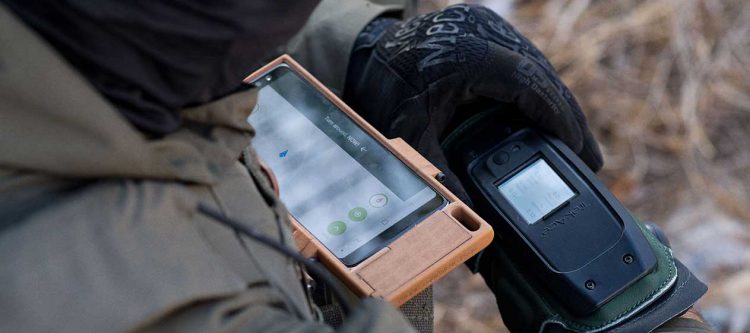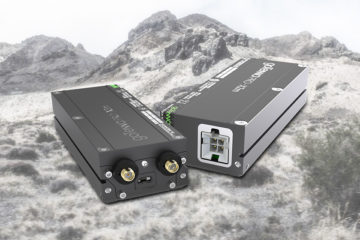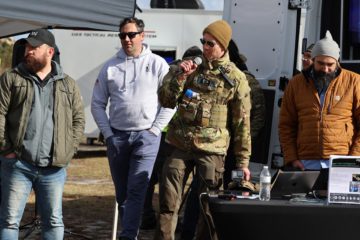Can wearables overcome the basic human limitations of warfighters?

 About a decade ago, wearables were an incredibly hot topic in the consumer electronics industry. When the Apple Watch was introduced, many people were skeptical about the functionality of a watch that looked like it was something right out of the Inspector Gadget Saturday morning cartoon. In fact, early reviews even questioned what people would use it for, like this The Verge review from 2015 by Nilay Patel, who wrote:
About a decade ago, wearables were an incredibly hot topic in the consumer electronics industry. When the Apple Watch was introduced, many people were skeptical about the functionality of a watch that looked like it was something right out of the Inspector Gadget Saturday morning cartoon. In fact, early reviews even questioned what people would use it for, like this The Verge review from 2015 by Nilay Patel, who wrote:
“For all of its technological marvel, the Apple Watch is still a smartwatch, and it’s not clear that anyone’s yet figured out what smartwatches are actually for. If you are willing to go along on that journey, then you’ll enjoy the Apple Watch. It is a bauble, after all, and baubles delight simply by their presence.”
Today, the Apple Watch has an almost 50 percent share of a growing smartwatch market. It’s clear that the time for wearables is here. It’s also clear why wearables are so exciting – these devices can effectively elevate the human experience. They can put new capability and functionality at our fingertips and put important information in front of our eyes.
Recently, The Last Mile sat down with Nir Yanev, the VP for Defense Sales at Israeli wearable provider, TrekAce, who thinks that wearables can do something similar for warfighters and military personnel. In fact, Nir and TrekAce believe that wearables can make soldiers more effective by overcoming some basic human limitations that are inherent in all of us.
We asked Nir about that, and the wearable solution that TrekAce has pioneered. Here is what he told us:
 TLM: The TrekAce website says, “humans have limitations.” What do you mean by that and how do your products fill those gaps?
TLM: The TrekAce website says, “humans have limitations.” What do you mean by that and how do your products fill those gaps?
Nir Yaniv: It’s not just something we say, it’s actually backed by science. Basically, we – as humans – have three basic human limitations that we can overcome with TrekAce technology.
First, as people, we cannot analyze two sound commands at the same time. Let’s say that I talk to you – as an example – and another person starts to talk to you. You will have to divert your attention in order to understand what each of us are saying. Another example would be listening to the GPS in your car and talking over the phone or to a passenger at the same time. You will miss turns. It happens to everybody because it creates an overlap in our brain that we cannot overcome.
The second human limitation is that we cannot analyze visual information and move at the same time. So, for example, if you try reading your Facebook, or text messages, or email while walking down the stairs, you’ll find it to be a very difficult and dangerous task. Or, imagine if you had digital pop-ups on your sunglasses or tactical glasses while trying to run and fight and shoot in the middle of a battlefield. That can be an extremely dangerous situation.
The third human limitation we are trying to overcome is the fact that navigation is not native to people. Unlike birds or other members of the animal kingdom, we’re not born with the ability to navigate. Therefore, we need to use equipment for navigation, and we need to train with that equipment – use it over and over again.
TLM: How does TrekAce’s technology work?
Nir Yaniv: TrekAce products are comprised of a wearable device and a software solution. The TrekAce Core, as we’re calling it, is a wearable sleeve. It actually creates vibrations on your upper arm in a very specific location. You wear it and it actually creates vibration on the vertical nerve system on your upper arm.
Haptics works on the external skin security of our body. It’s why we know when we are getting near to fire, or we’re getting bitten by mosquitoes. It enables our body to react very intuitively. While we didn’t invent the haptic sensations, we actually harness the body’s understanding of haptic sensations and we put it in a wearable device.
The upper arm solution is very unique for TrekAce because we found – through research – that this is the only place you can put something where it doesn’t impede other functions or tasks, and the mind can still differentiate the difference between each vibration and understand what they mean.
TLM: Another key gap your technology fills is location tracking in GPS-denied environments. What are some of the challenges your defense customers are currently facing with traditional GPS technology?
Nir Yaniv: GPS is very good, but it has its limitations, like many other technologies. GPS can be denied in austere environments. That’s accepted by every Western army around the world, and they work to prepare to operate in GPS environments both through training and technology.
As I mentioned, the Core wearable device is hardware, but the software we develop is an Android-based application. The reason it’s Android-based is because all Western armies are using Android devices as a portable computer and they have their own legacy applications on it and military applications on it for various missions.
Since TrekAce is just an app, it doesn’t take any space or weight. What TrekAce is actually doing is using the device itself, its sensors, in order to understand and mimic how a specific person is moving.
After a short calibration phase that takes about 15 minutes and is only done once, the user creates their own profile on the app. The app actually learns how they are moving, and – once you give it a starting point, like on your GPS – it will know where you’re going. It actually will show you where you are located on the map.
TLM: The TrekAce platform also includes software for situational awareness and command and control. What app integrations are included in your 3D Operational Effectiveness Sphere?
Nir Yaniv: First of all, we are extremely capable of integrating our solution into legacy systems, such as command and control systems. We can also integrate with communication systems, such as goTenna Pro mobile mesh networking solutions.
We actually harness the capability that goTenna provides in order to create a mesh network between the users. That mesh network can be used for situational awareness – showing the locations of their peers – and for communications using tactile sensations.
For example, a user can say a command like, “Team stop!” The entire team will get a very silent vibration that means “stop” and everybody will react.
Another, larger example is navigation capability in an environment where GPS is denied and on-the-ground navigation is needed in extreme weather conditions. The integration of Core and goTenna could work to complete the visuals of the location and provide situational awareness in that environment where there’s no GPS coverage.
TLM: What kinds of use cases exist within the military for these technologies?
Nir Yaniv: One use case would be covert and special operations, because the communication has to be done between peers quickly and in a more, clandestine, intuitive way. Mesh networking enables communication between the team members, and the Core makes it possible for that communication to be sent and received in a much more covert, and appropriate way.
TLM: Who is using TrekAce technology today, and are there any stories you can share about how your products impacted force safety and performance?
Nir Yaniv: TrekAce is a relatively young company, so the majority of our products that are in the field right now are in advanced testing with various special forces around the world including groups in the U.K. and the U.S. We’re also testing the technology with organizations in the Netherlands, Switzerland and France.
For many of these field tests, we are mainly providing the GPS-denied navigation capabilities. But in Israel, and around the world, we’re looking to be included in future soldier programs as an additional interface to the soldier – not just for ground units, but also for pilots.
TLM: We also heard that TrekAce will be making a Hollywood debut in an upcoming Netflix series soon. Can you tell our listeners more about the show?
Nir Yaniv: We were approached by a Netflix series that would like to present some Europeans and Israelis that have been kidnapped in the Sinai and are rescued by Norwegian special forces, mixed with an Israeli special force.
I believe that they were looking to have these special forces appear like they’re from the future – or from the top line of special forces around the world. So, yes, they’ve been using goTenna in combination with the TrekAce systems in order to find people on the ground.
For additional information on TrekAce Core wearables, visit their Website by clicking HERE.









No Comment